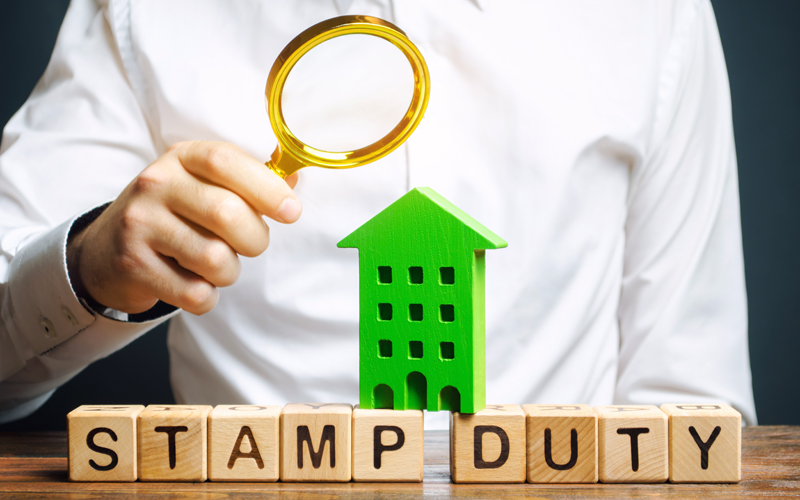State governments are reaping billions from stamp duty and making it harder for home buyers.
When property prices rise some of the biggest winners are state governments though their stamp duty river of financial gold. It is a major impediment to buying a property.
I reckon every home buyer has felt the financial trauma of settling on a property purchase and then being staggered by the amount of stamp duty they have to fund. If NSW removed stamp duty, a study this week by research group e61 Institute and PropTrack estimated about 100,000 additional owner-occupiers would move home each year – 25 per cent more than currently move.
The study also found that stamp duty has tripled as a share of income since the mid-1990s and that stamp duty imposes a cost of moving equivalent to around five months of a person’s take-home income. Recent survey results also show that it’s deterring people from downsizing and is generally an unpopular policy.
No wonder. The e61 Institute and PropTrack research calculated:
-
In Sydney, stamp duty on a median-priced home is equivalent to six months of full-time post-tax income. That is 5.4 times higher than it was in the early-to-mid 1980s
-
In Melbourne, buyers need the equivalent of six months of full-time income – a whopping 6.1-fold increase from four decades ago and the largest increase of any city.
-
Owner-occupiers in Brisbane pay 5.5 times as much stamp duty relative to income as in the early 1980s.
-
Adelaide, Perth and Hobart have also seen substantial increases in the cost of stamp duty. Stamp duty on a median-priced home is 4.9 times higher relative to income in Adelaide. It is five times higher in Perth, and 6.7 times higher in Hobart.
-
Housing costs are reportedly holding people back from moving homes, downsizing, changing jobs and even having children.
The most popular housing policy for state governments is to abolish stamp duty. As I talked about last week, that’s what tax reform is all about.
Former Treasury Secretary, Ken Henry, is calling for an increase in the GST to 12.5 per cent in order to abolish stamp duty and payroll tax.
The extra costs of buying a home
Extracted from: Look out for the extra costs of buying a home. Click through tot read the full article.
1. Stamp duty
See above. This government tax will be your biggest additional cost after the property purchase price. The amount of stamp duty you will have to pay varies considerably depending on factors like:
- which state you live in;
- whether you’re a first home buyer or not;
- the purpose of the property you’re purchasing (eg. a home you plan to live in as your primary residence or an investment property); and
- the type of property it is (eg. existing home, new home or vacant land).
You can use an online stamp duty calculator to find out how much you will pay. Find out more by visiting the revenue office of your state.
2. Lender’s mortgage insurance
Unless you have a 20 per cent deposit, or someone who will act as a guarantor, your lender will generally insist that you take out lender’s mortgage insurance (LMI). LMI is an insurance policy that protects the lender if you can’t afford to meet your loan repayments.
Note that even though you pay for it, LMI is there to protect the lender, not you, the borrower.
LMI can run into many tens of thousands of dollars. In many (if not most) cases you will be better off saving a 20 per cent deposit rather than paying for the policy.
3. Mortgage establishment fees
These fees vary between lenders, but all lenders will have some kind of additional charges to set up your mortgage. Some examples include:
- Application fee
- Property valuation costs
- Legal costs and document preparation
Note that there may also be ongoing fees to pay for the life of your loan.
4. Transfer fee
State governments charge a fee to transfer the title of the property from the seller to the buyer. This varies a lot between states and territories, so check what fee you’re up for by visiting the revenue office of your state.
5. Legal fees
While it’s possible to complete the legal requirements of buying a home yourself, it’s not advisable. You should seek legal assistance from either a solicitor or property conveyancer.
6. Property inspections
It’s important to get professional pest and building inspections done before you purchase. It can be tempting to ‘DIY’ these inspections, but don’t do it.
Money spent upfront can uncover hidden issues with the property that can run into many thousands of dollars. For instance, the last thing you want to find when you move into your ‘dream home’ is a neighbourhood of termites living in your walls.
7. Home and contents insurance
You’ve bought it, you’ve mortgaged it and now you will want to insure it. The cost of home and contents insurance varies widely, so it pays to do your homework. Using a comparison website can make this simple. You can input your own particular circumstances and compare the offerings of many insurers in one hit.




























Trending
Sorry. No data so far.